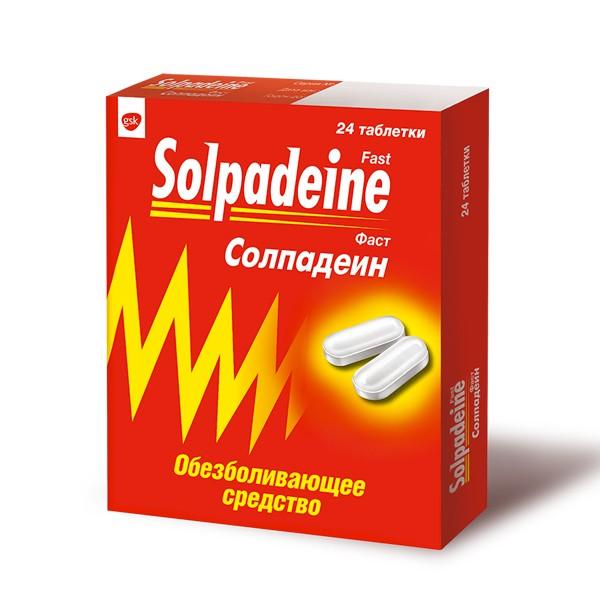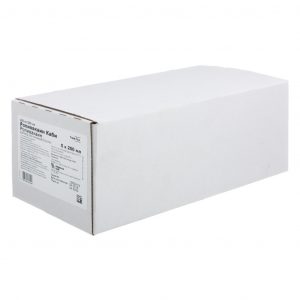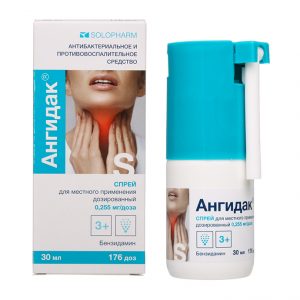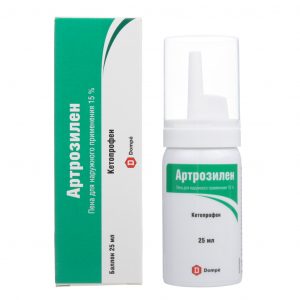Description
Latin name
Solpadeine
Release form
Film-coated tablets.
Packaging
24 tablets.
Pharmacological action
The drug has an analgesic and antipyretic effect. Solpadein Fast contains a combination of two active ingredients: paracetamol and caffeine.
Paracetamol blocks cyclooxygenase (COX) in the central nervous system (CNS) by acting on the centers of pain and thermoregulation (in inflamed tissues, cellular peroxidases neutralize the effect of paracetamol on COX), which explains the almost complete absence of anti-inflammatory effect.
The absence of an effect on the synthesis of Pg in peripheral tissues leads to the absence of a negative effect on water-salt metabolism (sodium and water retention) and the gastrointestinal mucosa.
Caffeine stimulates the psychomotor centers of the brain, has an analeptic effect, enhances the effect of analgesics, eliminates drowsiness and a feeling of fatigue, increases physical and mental performance.
Paracetamol is rapidly and almost completely absorbed from the gastrointestinal tract, the distribution in body fluids is relatively uniform.
The binding of paracetamol to plasma proteins is minimal at therapeutic concentrations. Paracetamol is metabolized in the liver and excreted in the urine in the form of glucuronide and sulfate metabolites – less than 5% is excreted as unchanged paracetamol. The half-life when taking a therapeutic dose is 2-3 hours.
Caffeine is rapidly absorbed from the gastrointestinal tract and distributed throughout the body.
Caffeine is almost completely metabolized in the liver by oxidation and demethylation in the form of metabolites that are excreted in the urine. The elimination half-life makes 4-9 hours.
Indications
Solpadein Fast is used to relieve headache, migraine, toothache, lower back pain, neuralgia, muscle and rheumatic pain, painful menstruation, sore throat.
² ÑSolpadein Fast ² Ñ is also used for the symptomatic treatment of colds and flu, lowering fever.
Contraindications
– hypersensitivity to the components of the drug
– severe impaired liver or kidney function
– arterial hypertension
– glaucoma
– sleep disorders
– children under 12 years old
– epilepsy.
Use during pregnancy and lactation
The drug “Solpadein Fast” contains caffeine.
When taking caffeine, there is a high risk of having a baby with a low body weight, the risk of spontaneous abortion.
Once in breast milk, caffeine can have a stimulating effect on a breast-fed baby.
The drug “Solpadein Fast” can not be taken during pregnancy and during breastfeeding.
Composition of
Active substances:
paracetamol 500 mg,
caffeine 65 mg.
Excipients:
pregelatinized starch 50 mg,
corn starch 41.4 mg,
povidone 2 mg,
potassium sorbate 0.6 mg,
talcum 15 mg,
stearic acid 5 mg sodium sbrlkp gell 5 mg
triacetin 1 mg
Dosage and administration
Adults (including the elderly) and children over 12 years of age: usually 1-2 tablets 3-4 times a day, if necessary.
An interval between doses of at least 4 hours. The maximum single dose is 2 tablets, The maximum daily dose is 8 tablets.
The drug is not recommended for more than five days as an anesthetic and more than three days as an antipyretic without prescribing and monitoring a doctor.
An increase in the daily dose of the drug or the duration of treatment is possible only under the supervision of a doctor.
Do not exceed the indicated dose. In case of overdose, consult a doctor immediately, even if you feel well.
Side effects of
In recommended doses, the drug is usually well tolerated. The following side effects were detected spontaneously during the post-registration use of the drug.
Side effects are classified by organ system and frequency. The frequency of side effects is defined as follows: very often (greater than or equal to 1/10), often (greater than or equal to 1/100 and less than 1/10), infrequently (greater than or equal to 1/1000 and less than 1/100), rarely ( greater than or equal to 1/10 000 and less than 1/1000) and very rarely (greater than or equal to 1/100 000 and less than 1/10 000).
Allergic reactions: Very rarely – in the form of skin rashes, angioedema (Quincke’s edema), Stevens-Johnson syndrome, anaphylaxis
From the hematopoietic system: Very rarely – leukopenia, thrombocytopenia, methemoglobinemia, agranulocytosis side : Very rarely – bronchospasm (in patients with hypersensitivity to acetylsalicylic acid and other non-steroidal anti-inflammatory drugs)
From the hepatobiliary system: Very rarely – impaired liver function.
With prolonged use in high doses, the likelihood of hepatotoxicity, nephrotoxicity and pancytopenia increases. Also, in cases of prolonged use in high doses, monitoring of the blood picture is necessary.
Reactions may occur in the form of dyspeptic disorders (including nausea, epigastric pain), increased irritability, dizziness, sleep disturbance, tachycardia.
With excessive consumption of caffeinated foods (tea, coffee, etc.) while taking the drug, anxiety, anxiety, irritability, insomnia, headache, disorders of the gastrointestinal tract, tachycardia, cardiac arrhythmia.
If any of the following side effects occur, stop taking the drug and consult a doctor immediately.
Drug Interaction
With regular administration for a long time, the drug increases the effect of indirect anticoagulants (warfarin and other coumarins), which increases the risk of bleeding.
Episodic administration of a single dose of the drug has no significant effect on the effect of indirect anticoagulants. Strengthens the action of MAO inhibitors.
Barbiturates, carbamazepine, phenytoin, primidone, ethanol, rifampicin, phenylbutazone, St. John’s wort, tricyclic antidepressants and other inducers of microsomal oxidation increase the production of hydroxylated active metabolites, causing the possibility of the development of peroxidation.
Inhibitors of microsomal liver enzymes (cimetidine) reduce the risk of hepatotoxic action.
Under the influence of paracetamol, the elimination time of chloramphenicol is increased 5-fold. Caffeine accelerates the absorption of ergotamine. Concomitant use of paracetamol and alcoholic beverages increases the risk of liver damage and acute pancreatitis.
Metoclopramide and domperidone increase, and cholestyramine reduces the absorption rate of paracetamol.
The drug may reduce the effectiveness of uricosuric drugs.
overdose
Symptoms (caused by paracetamol): within the first 24 hours after overdose – nausea, vomiting, stomach pain, pallor, anorexia. After 1-2 days, signs of liver damage (pain in the liver, increased activity of “liver” enzymes) are determined.
Carbohydrate metabolism and metabolic acidosis may develop. In adult patients, liver damage develops after taking more than 10 g of paracetamol.
In the presence of factors that affect the toxicity of paracetamol for the liver (see section “Interaction with other drugs”, “Special instructions”) liver damage is possible after taking 5 or more grams of paracetamol. In severe cases of overdose as a result of liver failure may develop encephalopathy (impaired brain function), bleeding, hypoglycemia, brain edema, up to the lethal outcome.
It is possible to develop acute renal failure with acute tubular necrosis, characterized by pain in the lumbar region, hematuria (an admixture of blood or red blood cells in the urine), proteinuria (increased protein content in the urine), with severe liver damage.
There were cases of cardiac arrhythmias, pancreatitis. Treatment: In case of suspected overdose, even in the absence of pronounced first symptoms, it is necessary to discontinue the drug and seek immediate medical attention.
Gastric lavage and enterosorbents (activated charcoal, polyfepan) are recommended within 1 hour after overdose. Paracetamol blood plasma levels should be determined, but not earlier than 4 hours after overdose (earlier results are unreliable).
Acetylcysteine administration within 24 hours of overdose. The maximum protective effect is provided during the first 8 hours after overdose, over time the effectiveness of the antidote drops sharply.
Acetylcysteine is administered intravenously as needed. In the absence of vomiting before the patient’s admission to the hospital, the use of methionine is possible. The need for additional therapeutic measures (further administration of methionine, in / in the introduction of acetylcysteine) is determined by the concentration of paracetamol in the blood, as well as by time, after his reception.
Treatment of patients with severe hepatic impairment 24 hours after taking acetaminophen should be performed in conjunction with a specialist at the toxicology center or specialist liver disease department.
Symptoms (caused by caffeine): epigastric pain, vomiting, frequent urination, tachycardia, arrhythmia, CNS stimulation (insomnia, anxiety, agitation, anxiety, increased nervous-reflex excitability, tremor and convulsions).
However, it should be borne in mind that the appearance of clinically significant symptoms of caffeine overdose when taken with this drug is always associated with severe liver damage on the background of paracetamol overdose.
Treatment: There is no specific antidote. Treatment includes supportive activities such as copious drinking and maintaining vital indicators. Activated charcoal is recommended within 1 hour to 4 hours after overdose.
To reduce the effects of caffeine overdose on central nervous system functions, it is recommended to administer sedatives intravenously
Storage conditions
Store at a temperature not exceeding 25 ° C. Keep out of the reach of children.
Expiration
4 years.
Terms of delivery from
pharmacy without a prescription
Dosage form
dosage form
tablets




